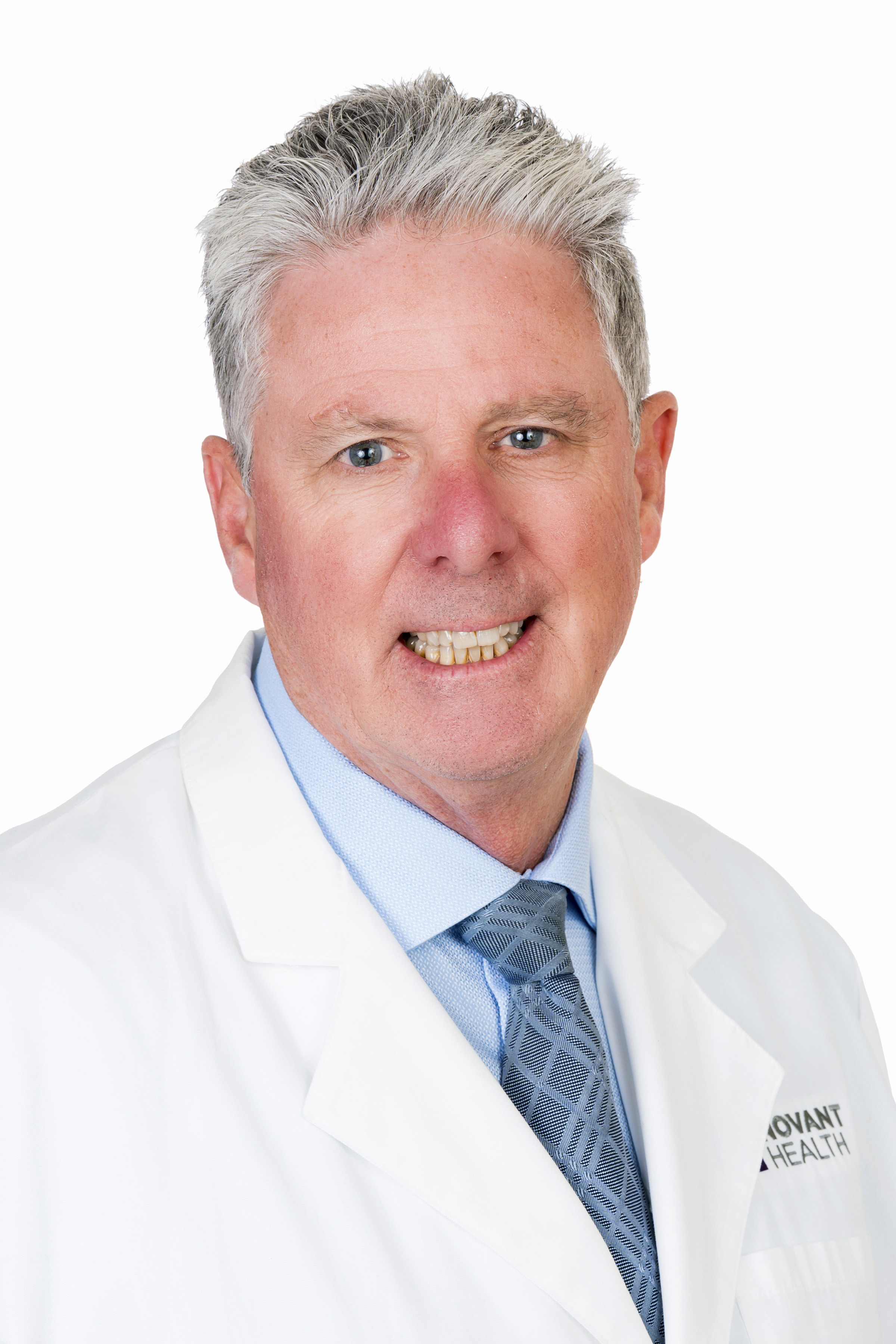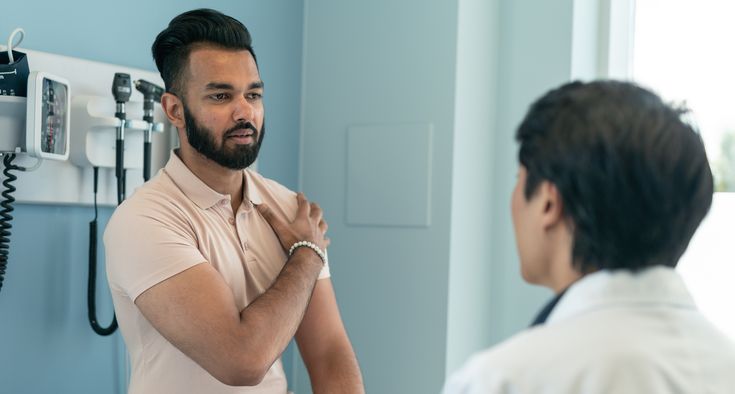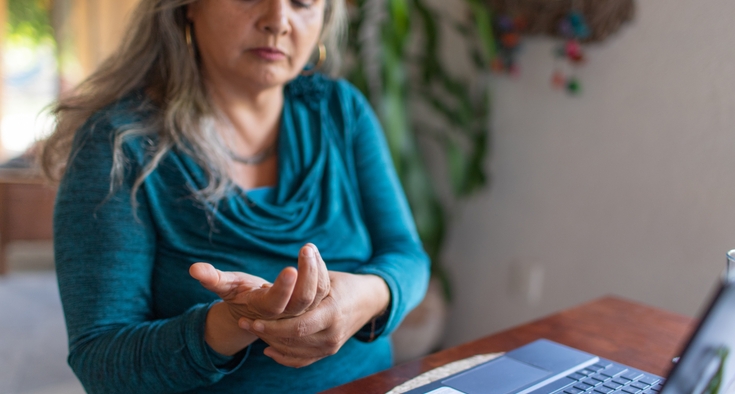Your shoulder aches, especially on the front or side. It hurts at night. You have trouble raising your arm over your head or twisting it behind your back. When you try to pick up an object you could normally handle, this time, you struggle to manage the weight.

These symptoms can all be hallmarks of rotator cuff injuries, according to Dr. Louis McIntyre with Novant Health Orthopedics & Sports Medicine - Clemmons.
While rotator cuff problems can happen to anyone, they are more likely to occur in people over 40. Aging makes the problem more common in almost everyone. “The majority of 80-year-olds have rotator cuff tears,” McIntyre said. “They don’t know they have a tear, but they have it nonetheless.” People whose work involves certain kinds of repetitive motion, such as house painting, may also be at risk.
What exactly is a rotator cuff? What treatment options are available? Here’s what you need to know to make informed decisions.
Injured? Get immediate orthopedic care.
A quick introduction to the shoulder
The rotator cuff is a group of muscles and tendons – cords that connect muscles to bones – that surround the shoulder joint. They hold the joint in place, allowing your arm to move 180 degrees around your body and above your head. “The shoulder has more motion than just about any other joint in the body,” McIntyre said.
Because of its position and blood supply, the rotator cuff is susceptible to degeneration over time. Problems can include tendinitis, or inflammation of the tendons, and fibrosis, which is scarring after inflammation. A partial tear goes through a portion of the tendon, while a full-thickness, or complete, tear indicates part of the tendon has detached from the bone.
Anti-inflammatory medicines and physical therapy
For less significant injuries, the first line of treatment is anti-inflammatory medicines or corticosteroid injections combined with physical therapy. “The majority of rotator cuff problems can be treated with those two modalities,” McIntyre said. Corticosteroid injections, commonly called steroid injections, deliver the most powerful anti-inflammation medicines available – more powerful than over-the-counter, non-steroid drugs liked Advil. The injection can be administered into the bursa, a fluid-filled sack between the rotator cuff and bone, to lessen or stop the pain.
The disadvantage of steroids? The medicine can degrade the tendon material, especially if steroids are used frequently.
Ortho-biologic injections such as platelet-rich plasma, or PRP, are a second option. “Platelets are amazing blood components full of all sorts of great healing factors” to attack the inflammation and reduce pain, McIntyre said.
To obtain PRP, the medical team draws the patient’s blood and spins it in a centrifuge. The process, which pulls out red blood cells, yields plasma with platelets concentrated at least four times higher than normal. The physician injects the enriched plasma in the shoulder.
Insurance companies typically won’t cover PRP. Talk with your physician about the pros and cons in your situation.
Types of surgery
If surgery is deemed the best solution, the most common is an arthroscopic rotator cuff repair. The surgeon uses an arthroscope (a thin tube with a camera) to see inside the joint while operating. The image appears on a television screen.
Top scores for safety in NC
Novant Health received the most ‘As’ for patient safety in North Carolina from The Leapfrog Group. With a focus on safety, quality and patient experience, the national, industry-leading nonprofit, evaluates and assigns letter grades ranging from A to F to hospitals across the country. Novant Health’s hospitals with “A” grades outperform 70% of hospitals nationwide for safety and quality.
Think of the procedure as knitting the tendon and bone back together. The surgeon initially places metal, fabric or plastic devices called suture anchors into the bone. Next, the surgeon sews stitches through and over the tendon onto the anchors to unite tendon and bone.
The patient wears a sling for about a month, followed by physical therapy. Full recovery is six to eight months, though patients are often satisfied with the initial results by the third or fourth month.
If the tendon is weak or the cuff tear is large, the surgeon might supplement the arthroscopic surgery with an augmented repair. In this case, grafts made from collagen, human tissue, or a bovine Achilles tendon are used as a patch to strengthen the area.
For “massive” rotator cuff tears, McIntyre has performed a reverse shoulder arthroplasty. This form of shoulder replacement alters the shoulder’s structure. The procedure lets the deltoid and other large muscles take over in place of the rotator cuff to allow the shoulder to move freely.
The medical literature on rotator cuff repair finds the majority of patients have a good or excellent result from surgery, with a low rate of complications, McIntyre said. One challenge in the field is some patients never heal completely from rotator cuff injuries. The reason why is unknown, but there are treatments even for persistent cases.
For many potential health issues, it’s important to take a proactive approach to prevent future problems. This is one area where you can relax because prevention isn’t possible. “It’s like trying to prevent your hair from turning gray,” McIntyre said. But should your rotator cuff become troublesome, there are plenty of treatments that can get you back to golfing, yoga, or lifting your kids or grandkids again.











